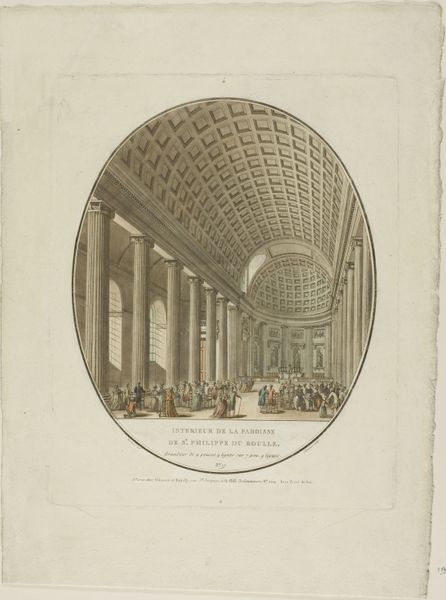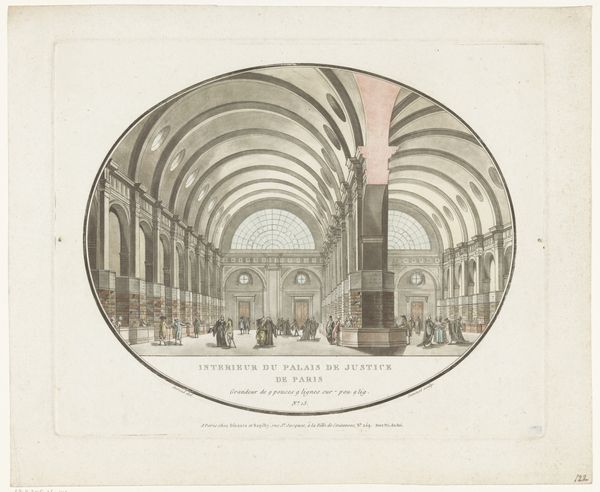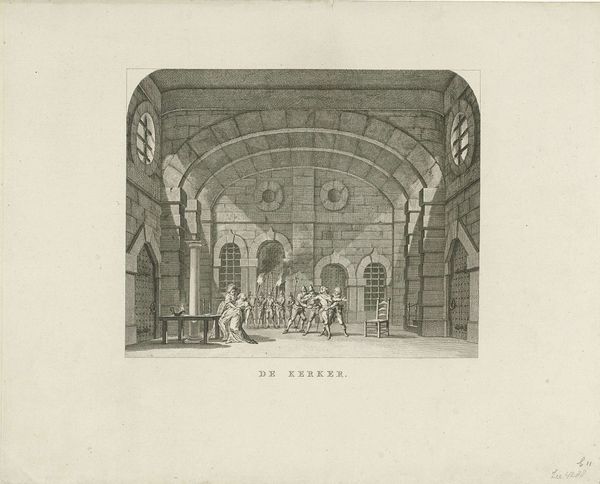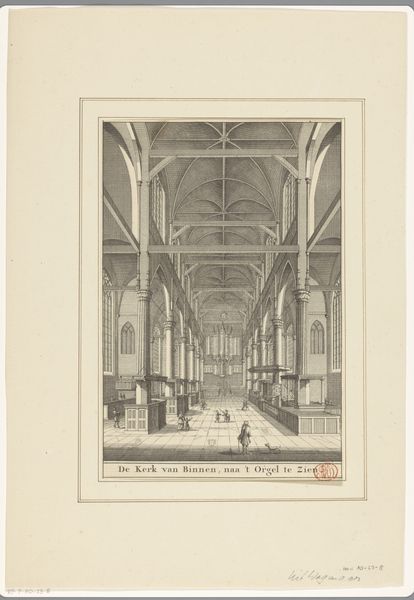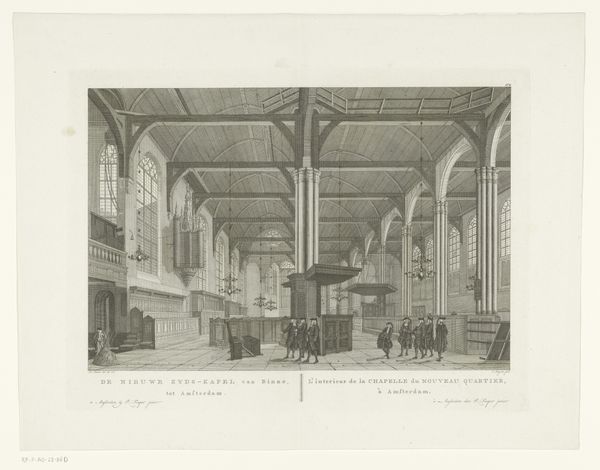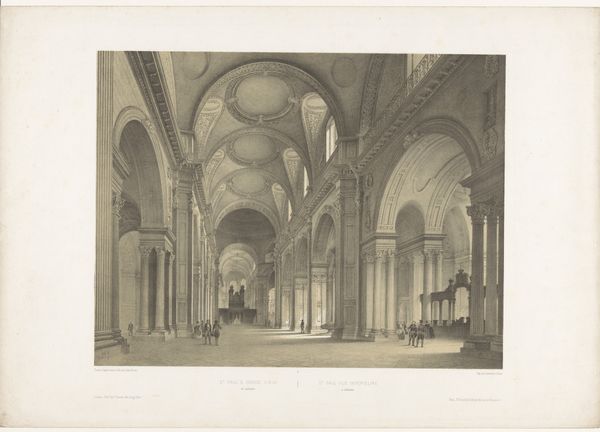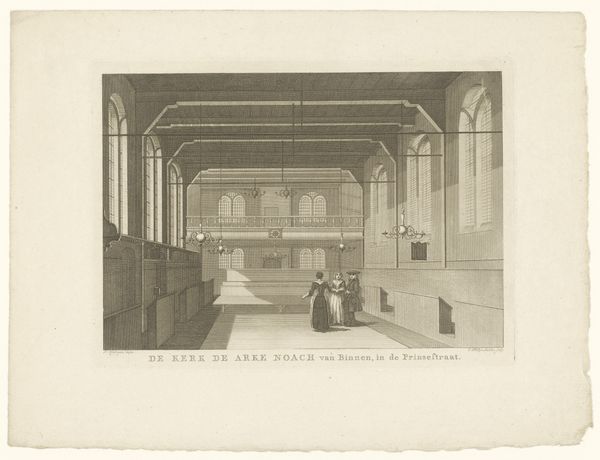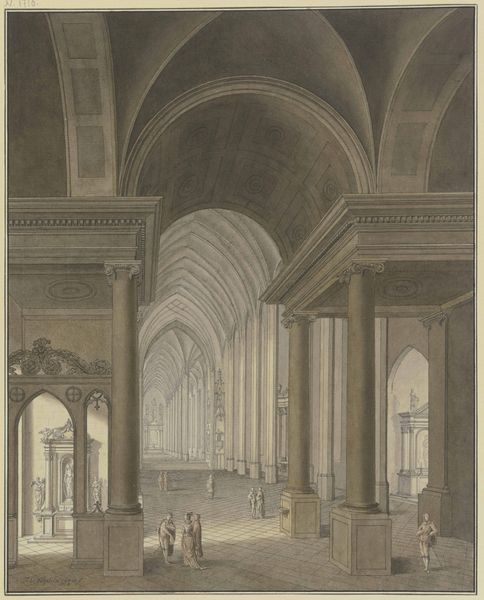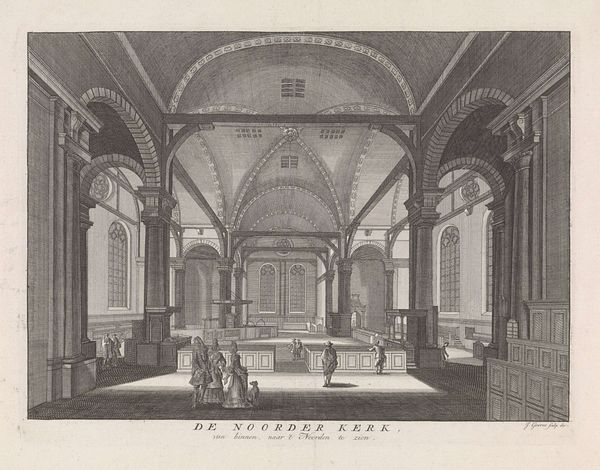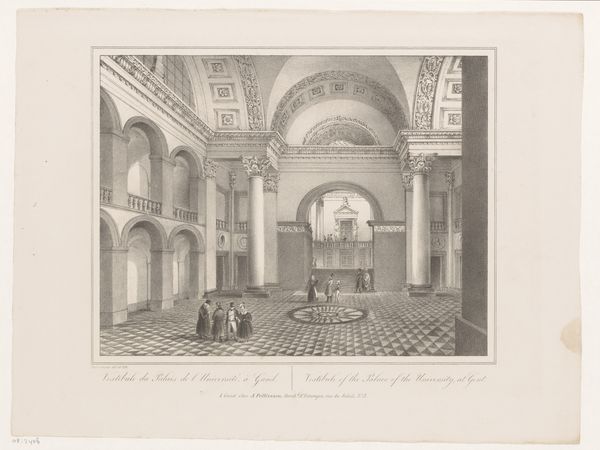
drawing, print, engraving, architecture
#
drawing
# print
#
perspective
#
line
#
cityscape
#
engraving
#
architecture
Dimensions: 162 mm (height) x 205 mm (width) (bladmaal)
Editor: So, this is "Frue Kirkes Indre," dating from 1776 to 1858. It's an engraving—drawing and print, really—of the interior of a church. I find the rigid symmetry pretty imposing, almost authoritarian. What do you see in this piece? Curator: That's a fascinating reaction. I see this print as a window into the complex relationship between power, religion, and societal norms in 18th and 19th century Denmark. Think about the church as a stage for social control, where architectural grandeur reinforces hierarchies. Editor: How so? I mean, it just looks like a building. Curator: Well, let's consider who had access to such spaces and how they were expected to behave within them. The visual language, the towering columns, the precisely rendered perspective – they all contribute to a sense of awe and, dare I say, subjugation. Does the uniformity perhaps reinforce social conformity? Editor: I guess I see that. The statues, all looking the same, lining the walls… Were women and people of colour present in any significant way in the church’s narrative? Curator: That's precisely the kind of question we need to ask. Who is represented here, and who is conspicuously absent? Whose stories are told, and whose are silenced? Looking at it through that lens, this seemingly innocuous architectural drawing becomes a powerful statement about the values—and the limitations—of its time. The Danish colonial past, class differences...all impact representation. Editor: I didn't think of it that way. Now the image feels like it has something important to say. Curator: Exactly. Art becomes truly meaningful when we actively engage with its historical context and consider the diverse perspectives it embodies. Keep questioning.
Comments
No comments
Be the first to comment and join the conversation on the ultimate creative platform.

